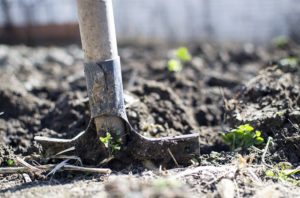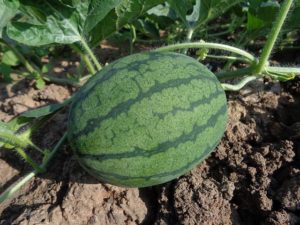What is a food forest or forest garden?
Tenerife Food Forest: Basically, a forest garden belongs to the area of permaculture. The forest garden is very much based on the model of nature and essentially consists of three levels, the tree level, the shrub level and the herb level. The different heights of the individual levels create optimal lighting conditions for all plants and the individual plants also support each other in different ways. A special forest garden is now the “edible forest garden”, here the Tropical Food Forest.
What makes the edible forest garden something really special?
In contrast to a normal forest or forest garden, the Food Forest tries to integrate trees, bushes and a herb layer, which not only complement each other in a meaningful way, but are also all edible. Not every edible plant makes sense in it or is compatible with other plants. The creation of the forest is first of all a good deal of work and also requires know-how. Because if you plant such an edible forest garden properly, it will be self-sustaining and even evolving over the years. An essential point of permaculture.

Tenerife Food Forest: In the beginning there is sweat
Creating a food forest requires not only know-how, but a whole portion of muscle power and work. But if the forest garden is properly laid out, it still needs a few more years of growth care before it mutates into a self-sustaining biotope.
Why is a food forest so important in our day and age?
Basically, forests are true all-rounders:
- Habitat for plants and animals
- Supplier of raw materials, e.g. as timber
- climate regulation
- Water reservoir: Trees and forest floor hold back precipitation and filter the water
- Protection against erosion: the roots bind the earth and thus protect against erosion (a particularly important issue in the Canary Islands)
- Improvement of air quality and climate: forests filter dust and pollutants from the air and produce oxygen
- Noise protection: vegetation can absorb noise from habitats
- recreation
In the course of efforts to protect the climate, the importance of forests as carbon storage has become more important.
We humans tend to ignore problems if they are not constantly brought to mind by the press. The worldwide cultivated areas are largely exhausted and not only limited in terms of quantity, but also exhausted in terms of quality.
Food from China: can this apple poison me?
Almost 8 billion people currently live on earth, with scientists estimating the number of people by 2050 to be around 10 billion. On the other hand, many third-world countries are striving for western industrial standards, which means that food consumption in the direction of meat and dairy products will also increase significantly. Climate change will also make large areas uninhabitable and uncultivable.
All in all, there are three enormous effects in a situation in which, for example, the loss of the Ukraine as a supplier of food and raw materials literally caused prices to explode in just a few weeks. The example of Ukraine shows how delicate and unsustainable global food production is.
The additional benefit of an edible forest garden is that it also provides people with high-quality food. An aspect that has never been as important as it is today.
Tenerife Food Forest: Enormous variety of fruits and vegetables in this special kind of permaculture
Permaculture is capable of a whole range of “tricks”, ie many things become possible through the targeted interplay of sun, light, shade, water, flora and fauna. With the “foodforest-ecotava.org” project, not only a normal edible forest garden is being created on Tenerife, but even a “tropical food forest”.
What is a Food Forest? (Geoff Lawton)

Food Forest Tenerife: An ideal location on a deforested island
Tenerife Food Forest: Especially Tenerife, an island plagued by soil erosion, where water and earth play an existential role, is an ideal location for the project “edible forest garden” or Food Forest.
At the end of the 15th century, the Spanish conquered Tenerife, which until then had been inhabited by the indigenous people, the Guanches. The Spaniards cleared large parts of the archipelago in favour of sugar cane plantations and, of course, the wood itself, which was urgently needed for shipbuilding. Until then, the image of Tenerife was characterised by large, green forests, with babbling springs and rushing rivers. With deforestation, soil erosion began to set in, slowly at first, then more and more rapidly. Laurel forests and pine trees can now only be found in the interior of the island. Large areas, especially in the south of the island, consist only of bare rock.
Now, a small forest garden of a few thousand square metres may not play a significant ecological role in relation to the size of the island, but it certainly does as a teaching and show project.